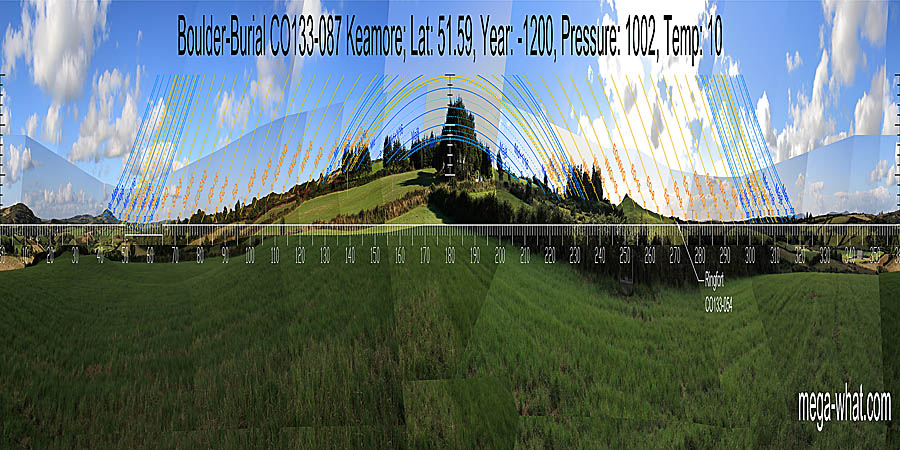 Keamore Boulder-Burial is between Skibbereen and Rosscarbery, about 1.5km north-west of Leap as the crow flies.
A nice one, interesting for the N/S, E/W orientation of its rectangular capstone which has, at least, three small cup-marks on it [Pic].
Keamore Boulder-Burial is between Skibbereen and Rosscarbery, about 1.5km north-west of Leap as the crow flies.
A nice one, interesting for the N/S, E/W orientation of its rectangular capstone which has, at least, three small cup-marks on it [Pic].
Major standstillLunistice positions vary cyclically over an 18.6 year period but are fairly static for more than a year at either end of the range moonrise and true south are both somewhere near the hilltop and indicated by the orientation, tilt & breadth of the capstone. The moon gets the wobbly edge [Pic]. North is on the left-hand side of a hill and is between two dips [Pic]. Note that theodolite survey was from the west side of the stone.
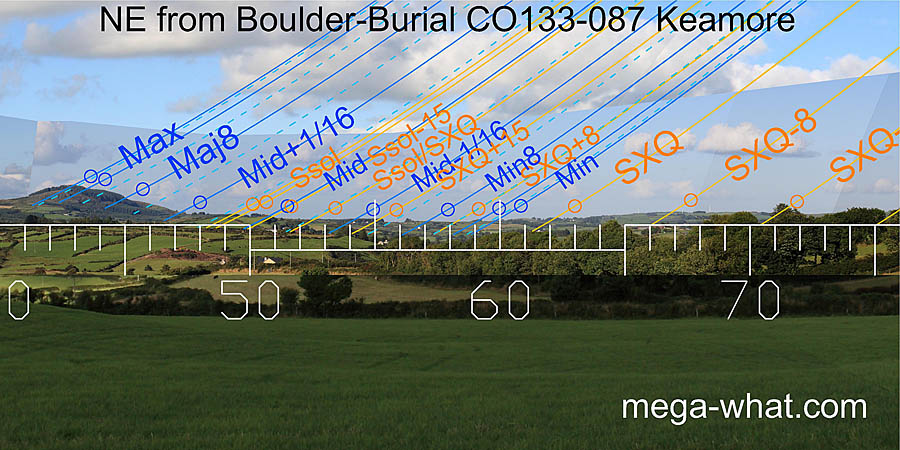 To the north-east, Carrig Fadda gives a nicely pointed mark for the most extreme northerly moonrise position.
The basal step is a sixteenth and the obvious break half-way down the slope is the major eighth. The solstice is on top of the next hump.
The lunar minor eighth is in the bottom of a dip and the minor end of the lunisticeLunistices are the most northerly and southerly moons of the month. The lunar equivalent of solstices - more.
range is marked by the north basal step of a low hill.
The cross-quarter is in the next dip and the next high point is a further half-month to the south...
To the north-east, Carrig Fadda gives a nicely pointed mark for the most extreme northerly moonrise position.
The basal step is a sixteenth and the obvious break half-way down the slope is the major eighth. The solstice is on top of the next hump.
The lunar minor eighth is in the bottom of a dip and the minor end of the lunisticeLunistices are the most northerly and southerly moons of the month. The lunar equivalent of solstices - more.
range is marked by the north basal step of a low hill.
The cross-quarter is in the next dip and the next high point is a further half-month to the south...
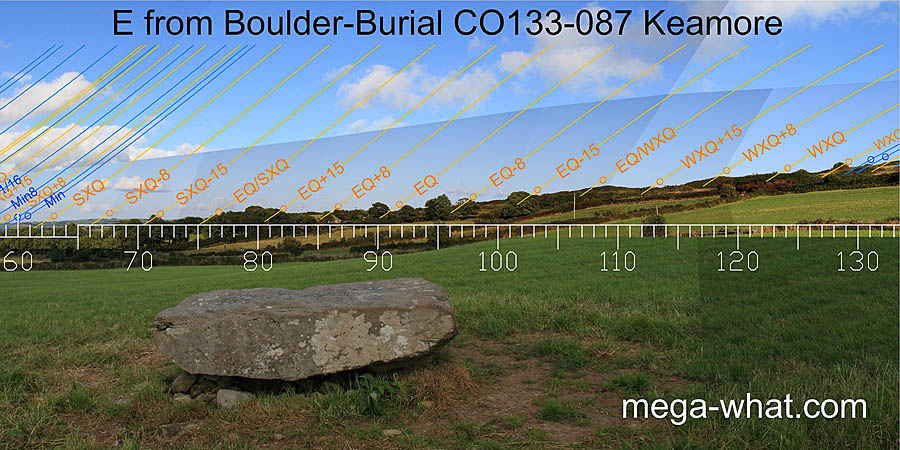
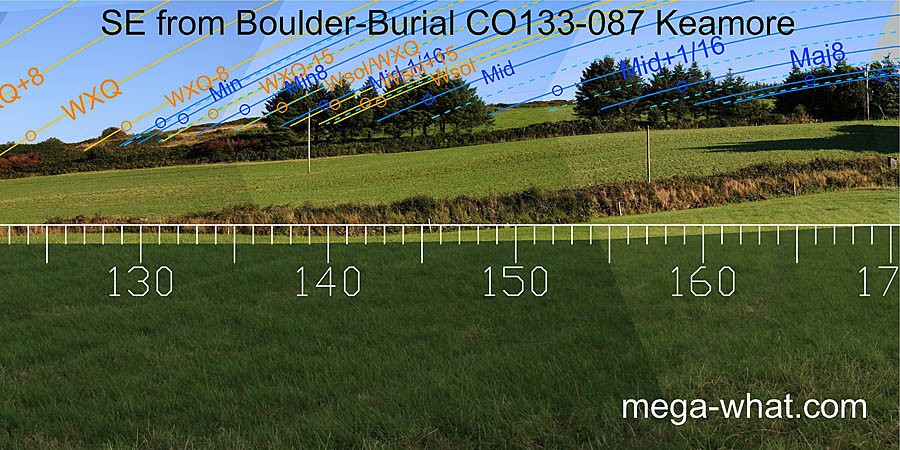
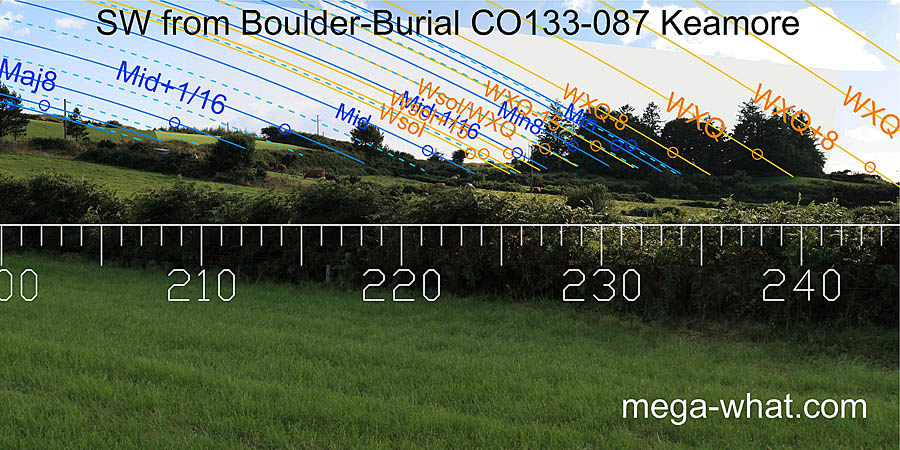
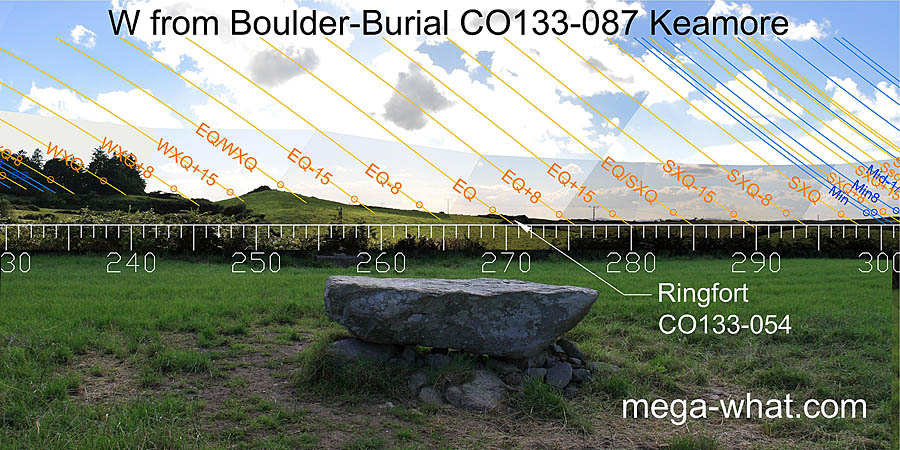
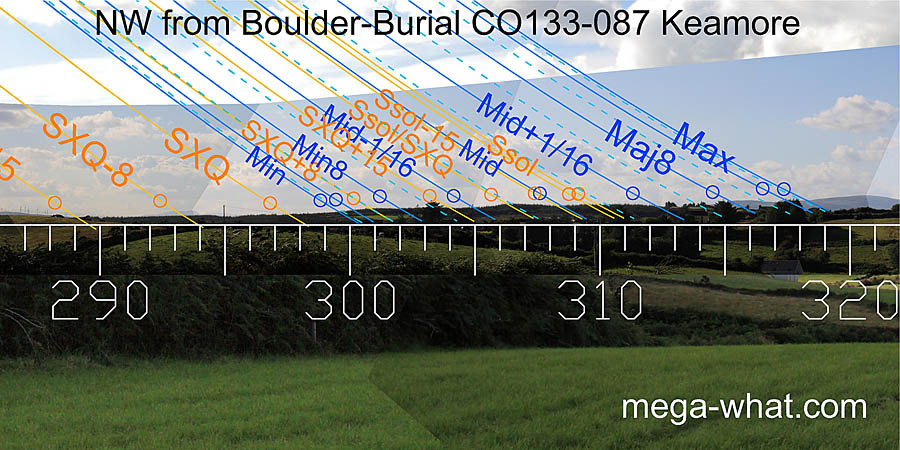 The north-west returns us to precision, with the shape of the nearer ground being indicative should the distant horizon fail.
The north-west returns us to precision, with the shape of the nearer ground being indicative should the distant horizon fail.
- Gurteenaduige Standing Stone Pair is 1.4km north-east (50°)
- Derryclough Boulder-Burial is 5.5km north (338°)
- Burgatia Boulder-Burial is 10.6km east (98°)
- Oldcourt Boulder-Burial is 12.9km south-west (236°)
References
- Archaeological Survey of Ireland, record details. www.archaeology.ie/archaeological-survey-ireland
- POWER, D. et al. 1992 Archaeological Inventory of County Cork, Volume 1: West Cork. Dublin: Stationary Office. p396, no.3530.
